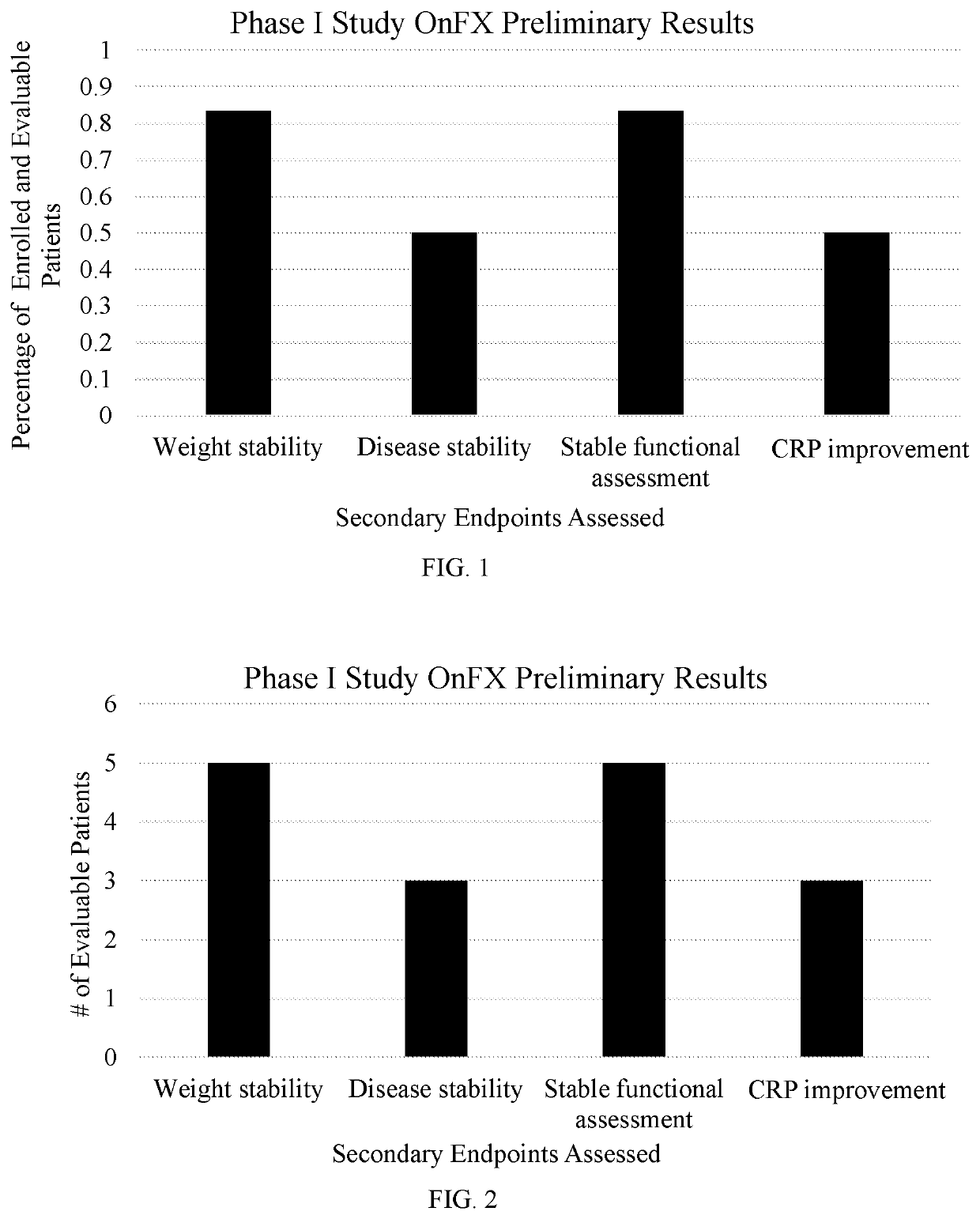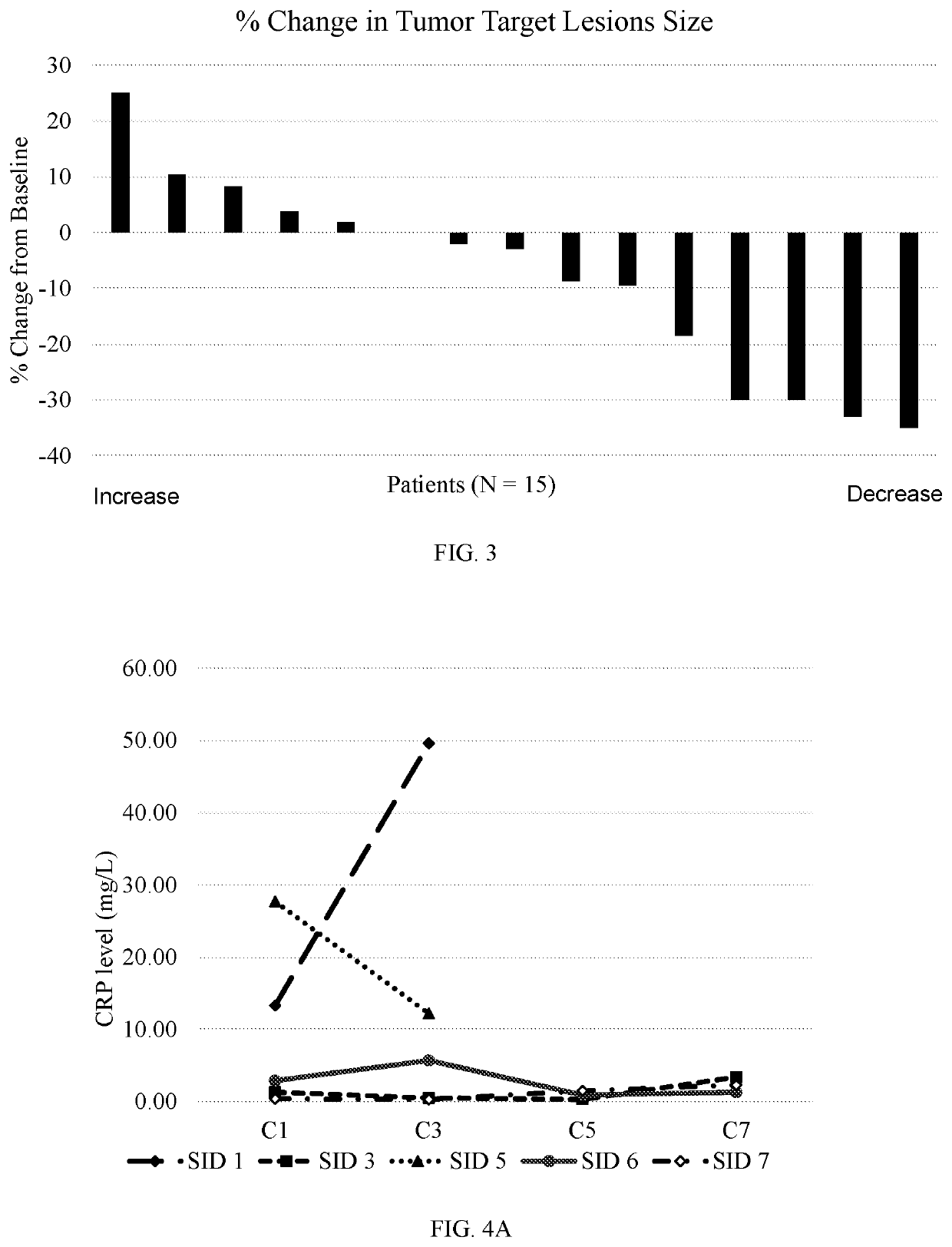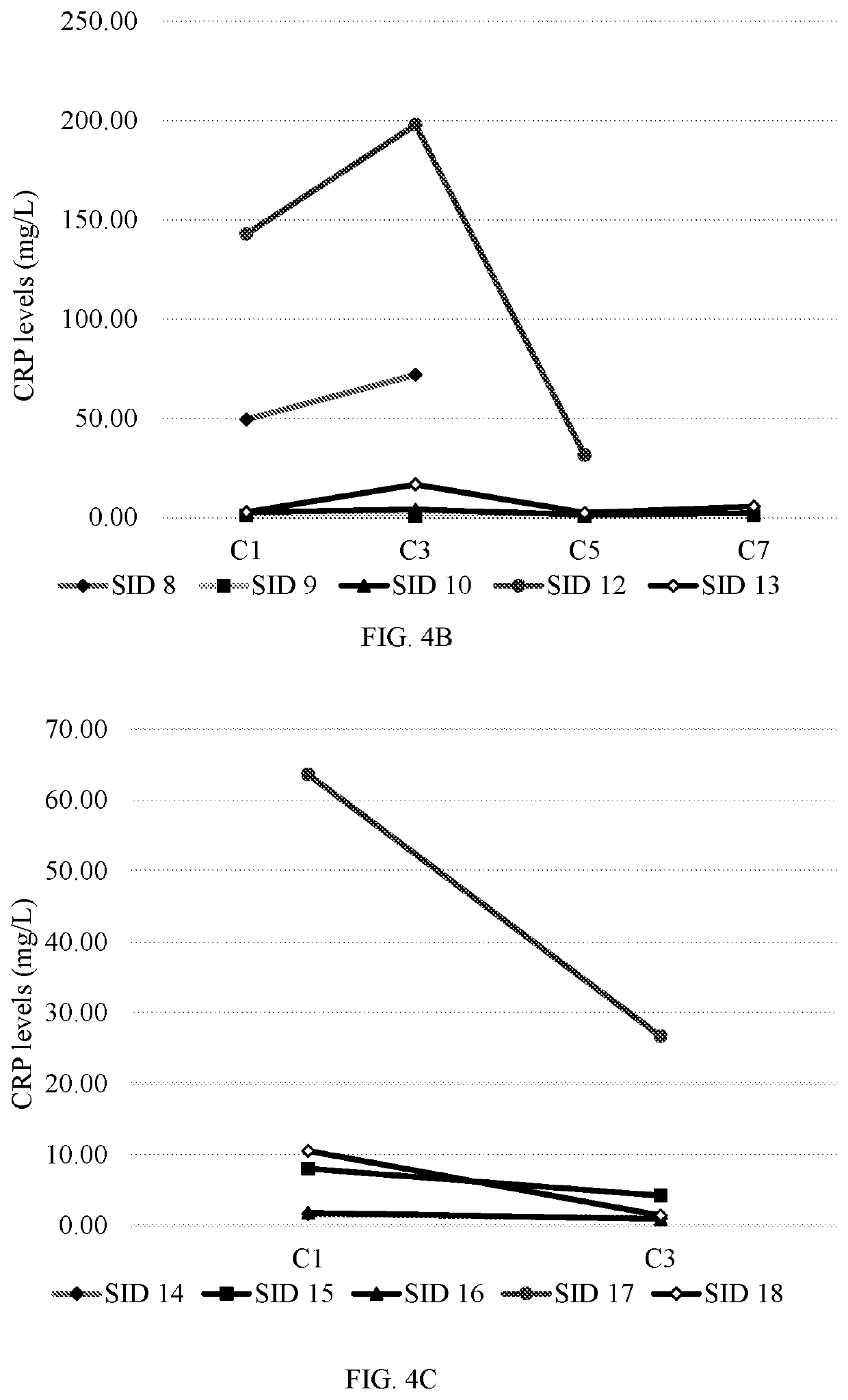Interleukin-1 inhibition for combination treatment of pancreatic cancer cachexia
a combination therapy and pancreatic cancer technology, applied in the field of therapies, can solve the problems of poor prognosis, no treatment advance for pancreatic cancer or its associated cachexia, and likely contributing to chemotherapy resistance and poor outcomes. , to achieve the effect of reducing the severity or likelihood of cancer cachexia
- Summary
- Abstract
- Description
- Claims
- Application Information
AI Technical Summary
Benefits of technology
Problems solved by technology
Method used
Image
Examples
example 1
tudy of ONIVYDE and 5FU in Combination with XILONIX for Advanced Pancreatic Cancer Patients with Cachexia
[0090]This study was aimed to examine the safety of the investigational drug, XILONIX™, in addition to standard doses of ONIVYDE® (nanoliposomal irinotecan) and 5-fluorouracil (5FU) / folinic acid (leucovorin) for pancreatic cancer patients with cachexia. Cachexia is a syndrome that includes involuntary weight loss and physical deterioration that can contribute to poor outcomes of cancer treatment. In other studies, XILONIX has increased lean body mass in advanced cancer patients. This increase could lead to improved weight maintenance and quality of life.
[0091]Main inclusion criterion was a diagnosis of advanced pancreatic cancer, who did not respond to an earlier treatment, with cachexia defined as 5% weight loss over a 6-month period of time.
[0092]This study prospectively evaluated advanced pancreatic adenocarcinoma patients. The intervention was interleukin-1-alpha antagonist (...
example 2
nalysis of the Phase One Study in Example 1
[0380]Eight enrolled patients had a median age of 67 years (range 55-79), 3 women, all with advanced pancreatic cancer and cachexia. Their races were as follows: 3 Caucasian, 3 Asian and 2 African American. Of the 8 patients 6 were evaluable, as summarized in table 2.
TABLE 2Clinical Features of Enrolled Patients# of Enrolled Patients8# of Evaluable Patients6Median Age67 yearsSexFemale: 3Male: 5RaceCaucasian: 3Asian: 3African American: 2
[0381]There was only 1 dose limiting toxicity for grade 3 fatigue. 3 / 6 had disease stability including 1 partial response. 5 / 6 had weight stability, 5 / 6 has stable functional assessment based on the frailty score. C-reactive protein (CRP) was significantly elevated in 3 / 6 patients and improved with treatment. (FIGS. 1 and 2).
[0382]The addition of interleukin-1-alpha-antagonist therapy to nano-liposomal irinotecan and 5-fluorouracil was well tolerated at least up to the time this patent application is filed wi...
example 3
t of Data from OnFx Clinical Trial in Example 1
[0383]18 patients were enrolled, of which 15 were evaluable. Subject IDs (SIDs) 1-18, wherein SIDs 2, 4 and 11 were not evaluable. Data was collected at treatment cycles C1, C3, C5, C7, etc. Each treatment cycle was about 28 days.
[0384]The percentage of patients showing positive response to the treatment of pancreatic cancer was 27%, whereas 67% of the patients had stable disease (SD) and 7% of the patients had disease progression (PD).
[0385]The percentage of patients showing weight stability (measured after 2 cycles, or two months) was 53%, calculated as weight decrease of less than 0.1 kg / BMI or any increase. 47% of the patients experienced unstable weight, calculated as weight decrease of 0.1 kg / BMI or greater. BMI stands for body mass index (kg / m2).
[0386]FIG. 3 shows the percentage of change in tumor target lesion size, compared to baseline, of each of the 15 evaluable patients.
[0387]FIGS. 4A-4C depict the levels of C-reactive prote...
PUM
 Login to View More
Login to View More Abstract
Description
Claims
Application Information
 Login to View More
Login to View More - Generate Ideas
- Intellectual Property
- Life Sciences
- Materials
- Tech Scout
- Unparalleled Data Quality
- Higher Quality Content
- 60% Fewer Hallucinations
Browse by: Latest US Patents, China's latest patents, Technical Efficacy Thesaurus, Application Domain, Technology Topic, Popular Technical Reports.
© 2025 PatSnap. All rights reserved.Legal|Privacy policy|Modern Slavery Act Transparency Statement|Sitemap|About US| Contact US: help@patsnap.com



